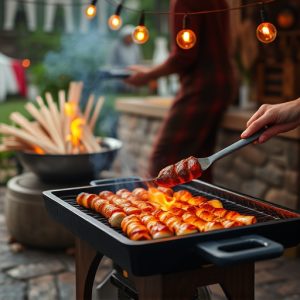Discover a simple, tantalizing BBQ chicken tenders in oven recipe with customizable seasoning. Preheat your oven to 400°F (200°C), line a baking sheet, and marinate chicken strips for 30 minutes to an hour. Mix dry seasonings, coat tenders, arrange on the sheet, and bake for 15-20 minutes until crispy. Check doneness at 165°F (74°C), let rest, then serve with sides like lettuce salads or steamed veggies. Leftovers keep well in the refrigerator up to 4 days.
Looking for a quick, easy, and delicious BBQ chicken tender recipe? This homemade version is perfect for a busy weeknight dinner. With just a few simple ingredients, you can have juicy, crispy chicken tenders ready in no time. Our step-by-step guide covers everything from preheating your oven to storing leftovers. Get ready for a tasty treat with this ultimate BBQ chicken tenders in oven recipe!
- Ingredients for BBQ Chicken Tenders
- Preheating the Oven and Preparing the Baking Sheet
- Marinating the Chicken Breasts
- Assembling and Seasoning the Tenders
- Baking Process and Cooking Time
- Checking for Doneness and Resting the Meat
- Serving Suggestions and Storage Tips
Ingredients for BBQ Chicken Tenders

When it comes to creating a mouthwatering BBQ chicken tender recipe, simplicity meets deliciousness in this oven-baked version. For this quick and easy meal, gather the following ingredients: boneless, skinless chicken breasts cut into strips, a mix of your favorite BBQ seasoning (store-bought or homemade), olive oil, garlic powder, paprika, salt, and pepper.
The beauty of this BBQ chicken tenders in oven recipe lies in its ease and versatility. You can adjust the seasoning to suit your taste preferences, adding a touch of sweetness, tanginess, or heat with additional spices. This basic formula ensures that each tender is coated evenly, resulting in a crispy exterior and juicy interior—a favorite for both kids and adults alike.
Preheating the Oven and Preparing the Baking Sheet

Before you begin preparing your BBQ chicken tenders, it’s essential to preheat your oven to ensure even and efficient cooking. Set your oven to 400°F (200°C) and allow it to reach this temperature while you prepare the rest of your ingredients. This step is crucial for achieving crispy, golden-brown chicken tenders.
To make things easier, line a baking sheet with parchment paper or spray it lightly with cooking oil. This will prevent the tenderloins from sticking and ensure they cook evenly. Place the prepared baking sheet in the preheated oven to get it ready for the next step of your BBQ chicken tenders in oven recipe.
Marinating the Chicken Breasts
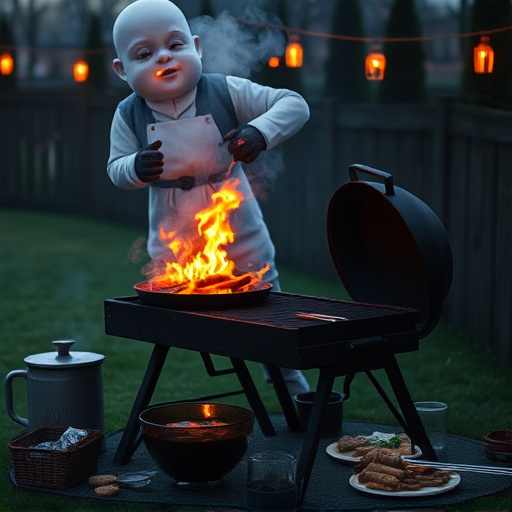
When preparing BBQ chicken tenders, marinating the chicken breasts is a crucial step that enhances flavor and makes the cooking process quicker and easier. Start by placing your boneless, skinless chicken breasts in a large resealable bag. In a separate bowl, whisk together your chosen marinade ingredients—this could be a simple mixture of olive oil, BBQ sauce, garlic, salt, and pepper, or you can opt for a more complex blend with herbs like thyme and rosemary. Pour the marinade over the chicken, ensuring each piece is thoroughly coated. Seal the bag tightly and massage it gently to distribute the marinade evenly. Refrigerate for 30 minutes to an hour, or even up to 4 hours if you have the time; this step allows the flavors to penetrate the meat, resulting in tender and delicious BBQ chicken tenders when cooked in the oven.
Assembling and Seasoning the Tenders
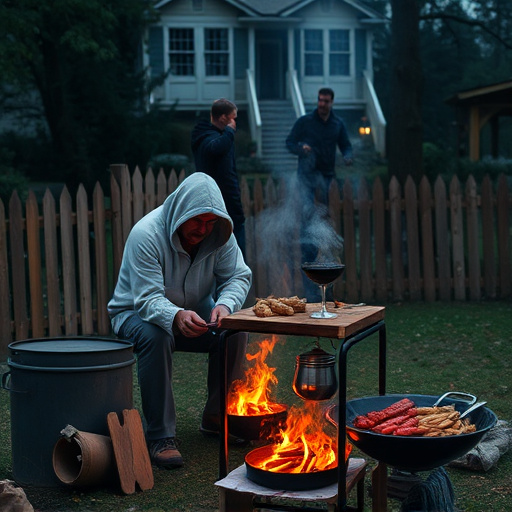
To assemble and season your BBQ chicken tenders, start by preheating your oven to 400°F (200°C). In a large bowl, mix together your dry ingredients: paprika, garlic powder, salt, and pepper. Whisk in the cornstarch until well combined. Add the chicken tenders to the bowl and toss them thoroughly until they’re evenly coated with the seasoning mixture. Ensure every piece of chicken is covered for that mouthwatering crispy finish.
Next, place the seasoned chicken tenders on a baking sheet lined with parchment paper, making sure they’re not overlapping. This arrangement allows for even air circulation, resulting in tender and perfectly cooked chicken. If desired, you can brush each tender with a layer of BBQ sauce before baking for an extra smoky, tangy flavor—a popular choice for this simple oven-baked BBQ chicken tenders recipe.
Baking Process and Cooking Time
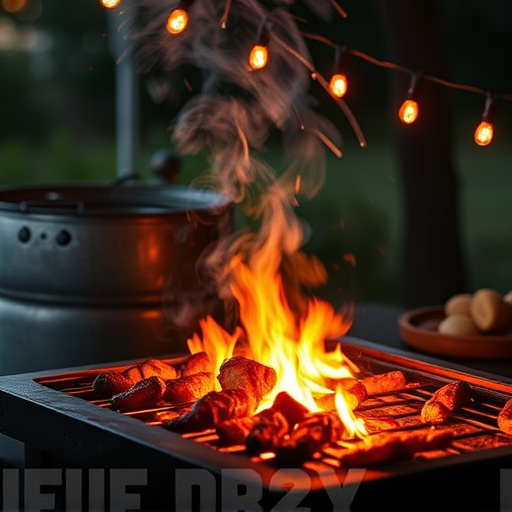
When it comes to baking your BBQ chicken tenders, the oven is a versatile and efficient choice. Preheat your oven to 400°F (200°C) to ensure even cooking. Place the coated chicken tenders on a lined baking sheet, allowing space between each tender for optimal browning. The cooking time for this method is approximately 15-20 minutes, or until the chicken is cooked through and the breading is golden brown and crispy. Regularly check on them to prevent burning and ensure they’re cooked evenly.
Checking for Doneness and Resting the Meat
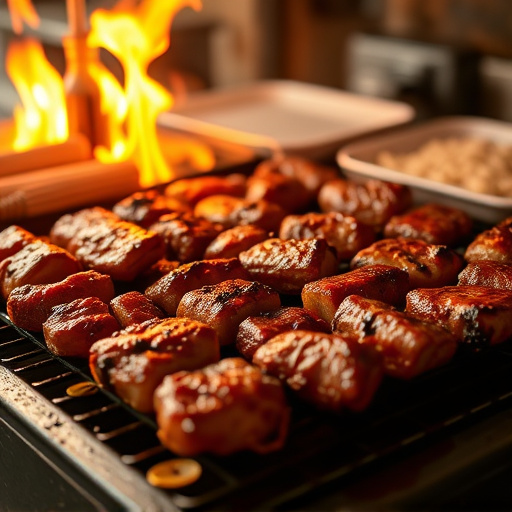
When preparing your BBQ chicken tenders in the oven, checking for doneness is crucial to ensure they’re cooked perfectly. The internal temperature should reach 165°F (74°C) for safety and juiciness. Use a meat thermometer to verify; this ensures your chicken is thoroughly cooked without overcooking, which can lead to dry, tough tenders.
After removing the BBQ chicken tenders from the oven, it’s essential to let them rest for a few minutes. This resting period allows the juices to redistribute throughout the tender meat, resulting in a more flavorful and moist finish. During this time, the internal temperature will continue to rise slightly, ensuring they’re safe to eat while maintaining their tender texture.
Serving Suggestions and Storage Tips
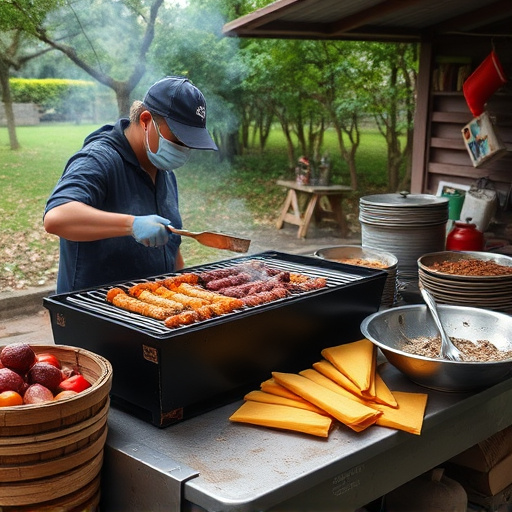
When serving your delicious BBQ chicken tenders, consider pairing them with some classic sides like crispy lettuce salads, mashed potatoes, or steamed vegetables for a balanced meal. For an extra touch, offer a selection of sauces—barbecue sauce, ranch dressing, or even a simple lemon-butter sauce—to cater to different taste preferences. Leftover BBQ chicken tenders? No problem! These treats store well in the refrigerator for up to 4 days. Simply transfer them to an airtight container after cooling. Reheat them in the oven or on the stovetop when ready to enjoy, ensuring they reach an internal temperature of at least 165°F (74°C) to maintain food safety standards.
